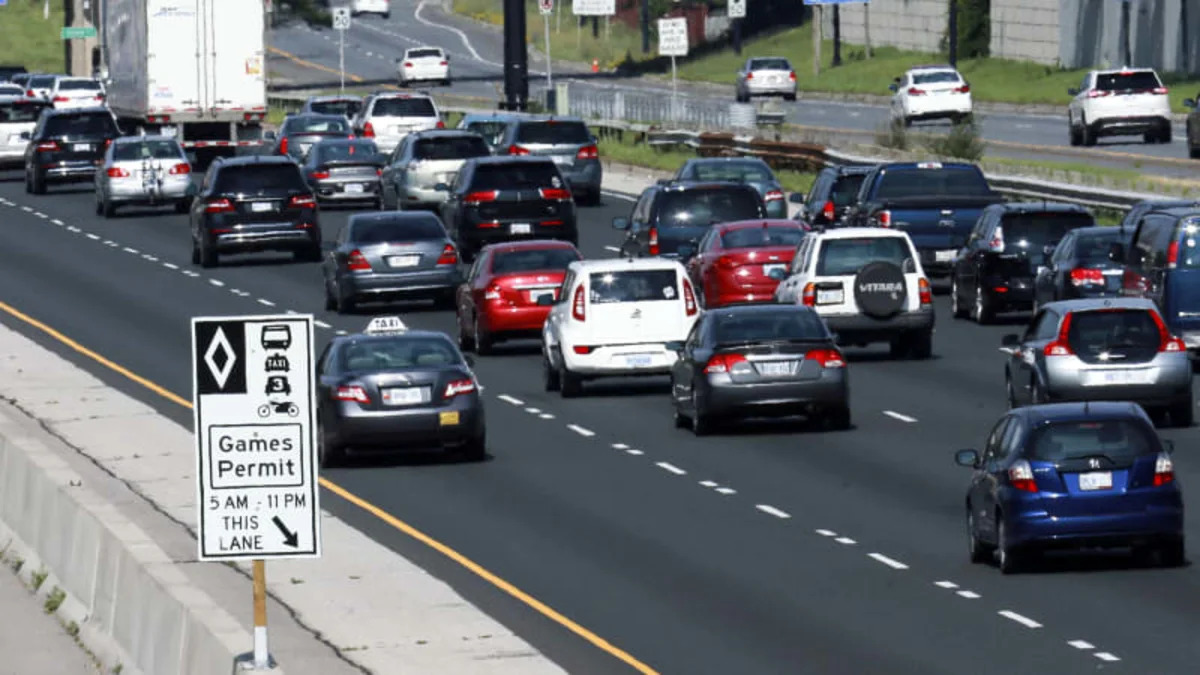Hours are lost every week sitting in traffic, but Lyft co-founders John Zimmer and Logan Green are promoting a plan: implement what they're calling smart lanes in order to relieve congestion and give time back to the people. Best of all, they say, the smart lanes can be introduced almost immediately at a relatively low cost.
In a post on Medium, the duo outlined the plan and the rationale behind it. Based on different studies, adding additional lanes does nothing but increase the number of total cars that slow down traffic. The goal instead should be reducing the number of total vehicles on the road. While HOV lanes currently encourage this, the so-called smart lanes would alter the how they're currently used and implemented.
Free access to the smart lanes would require three people per vehicle. For a fee, vehicles with fewer occupants would still be able to use the lane. Fees for using the lanes would be flexible and change based on the time of day. During slower hours, the smart lanes would revert to regular lane status.
The whole point is creating a fast track without having to build additional lanes for traffic while at the same time reducing the overall number of vehicles on the road by getting more people in fewer cars. The fees generated by users would be used to invest in and enhance infrastructure. Determining which lanes should be designated as smart lanes would require local and regional governments to analyze traffic data and determine where driver's would gain the most benefit.
As great as the idea is, it isn't a new one. In fact, Washington state has a very similar toll road already in place near Seattle. The road works much like Zimmer and Green have outlined (flexible fees for fewer occupants, free for all during slow hours, etc.) and seems to be working well. The only notable difference is Washington allows two passenger vehicles to use the lanes while Zimmer and Green's plan means a minimum of three per car.
Obviously, promotion of the idea wouldn't be fully complete without a mention of Lyft and how the ridesharing company fits into this brave new world. Lyft Line, like UberPool, allows different passengers to share a ride if they're heading in the same direction. This would allow the driver to take advantage of the smart lanes and in turn get to the destination sooner in addition to taking cars off the streets. Lyft line already makes up a significant amount of the company's overall business.
While we're sure most people would love to decrease traffic and the overall amount of cars on the road, getting the government to make the first few steps would no doubt take some monumental effort and lobbying.
Related Video:
In a post on Medium, the duo outlined the plan and the rationale behind it. Based on different studies, adding additional lanes does nothing but increase the number of total cars that slow down traffic. The goal instead should be reducing the number of total vehicles on the road. While HOV lanes currently encourage this, the so-called smart lanes would alter the how they're currently used and implemented.
Free access to the smart lanes would require three people per vehicle. For a fee, vehicles with fewer occupants would still be able to use the lane. Fees for using the lanes would be flexible and change based on the time of day. During slower hours, the smart lanes would revert to regular lane status.
The whole point is creating a fast track without having to build additional lanes for traffic while at the same time reducing the overall number of vehicles on the road by getting more people in fewer cars. The fees generated by users would be used to invest in and enhance infrastructure. Determining which lanes should be designated as smart lanes would require local and regional governments to analyze traffic data and determine where driver's would gain the most benefit.
As great as the idea is, it isn't a new one. In fact, Washington state has a very similar toll road already in place near Seattle. The road works much like Zimmer and Green have outlined (flexible fees for fewer occupants, free for all during slow hours, etc.) and seems to be working well. The only notable difference is Washington allows two passenger vehicles to use the lanes while Zimmer and Green's plan means a minimum of three per car.
Obviously, promotion of the idea wouldn't be fully complete without a mention of Lyft and how the ridesharing company fits into this brave new world. Lyft Line, like UberPool, allows different passengers to share a ride if they're heading in the same direction. This would allow the driver to take advantage of the smart lanes and in turn get to the destination sooner in addition to taking cars off the streets. Lyft line already makes up a significant amount of the company's overall business.
While we're sure most people would love to decrease traffic and the overall amount of cars on the road, getting the government to make the first few steps would no doubt take some monumental effort and lobbying.
Related Video:


Sign in to post
Please sign in to leave a comment.
Continue